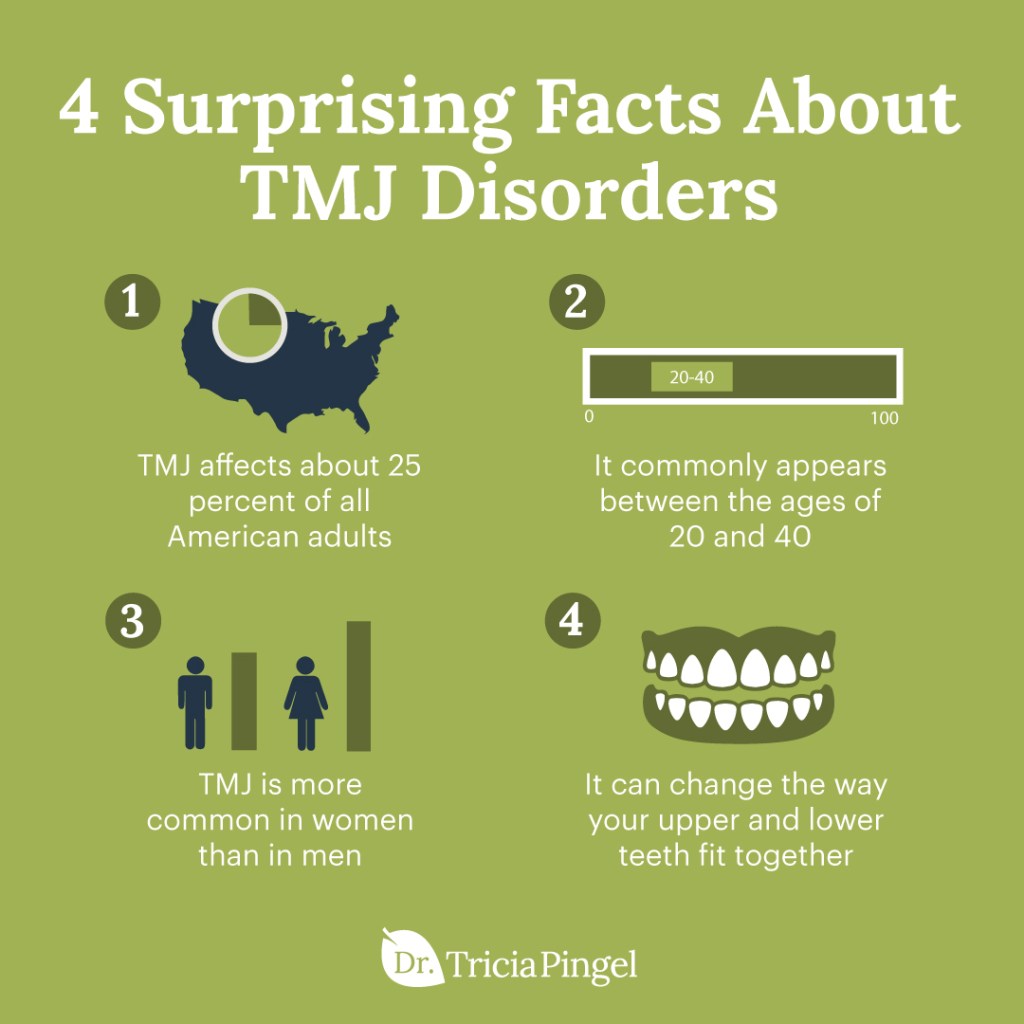As our rates of stress rise, so do our rates of other conditions. One of those conditions? TMJ disorder.
Think about it: Have you even woken up with a pounding headache in your temples—only to realize you’re clenching your teeth? Or do you find yourself clenching your teeth when faced with a particularly tough work problem?
Odds are high that if you regularly experience discomfort around your jaw, you may have some form of TMJ dysfunction, also known as temporomandibular joint dysfunction.
But what's the link between the two, and what should you do if you're experiencing TMJ pain?
Let’s dive in and learn all about TMJ disorder and what you can do about it.
First, we need to make an important distinction: TMJ itself isn’t an issue. Oftentimes, we’ll hear something like, “I have TMJ.” But TMJ simply refers to the temporomandibular joint.
What people actually mean to say is that they have TMJ disorder, also known as TMD, or temporomandibular disorder.
So, what is TMJ disorder? It’s a painful, degenerative condition that impacts your jawbone and the surrounding muscles and tendons.
In up to 70 percent of all cases, this condition occurs from the TMJ disc being in the wrong position. [1]
Interestingly, studies have shown that there’s a direct link between TMJ disorders and stress, with higher self-reported rates of stress being linked to an increased incidence of TMJ disorders. [2]
Meanwhile, according to the National Institute of Dental and Craniofacial Research, it’s a combination of genetics along with psychological and lifestyle stress that causes TMJ disorders. [3]
It’s also commonly accepted that TMJ disorders can be caused by bruxism (teeth grinding or clenching), which is commonly linked to stress, or even arthritis in the TMJ.
Despite popular belief, an improper bite and/or orthodontic braces are not believed to cause the condition.
Here are a few more surprising facts about TMJ disorders: [4]
1. TMJ affects about 25 percent of all American adults.
2. It commonly appears between the ages of 20 and 40.
3. TMJ is more common in women than in men.
4. It can change the way your upper and lower teeth fit together!

So, what are the symptoms of TMJ disorders? Are there certain signs you could have this condition?
Research on stressed-out dental students revealed that there are certain symptoms linked to TMJ disorders: [5]
If you’re wondering how TMJ disorders are diagnosed, they can be diagnosed in a few different ways.
First, they may be diagnosed on symptoms alone. Your doctor or dentist will likely ask you a serious of questions to best determine if TMJ dysfunction could be the cause of your discomfort.
If your doctor or dentist still isn’t quite sure, he or she may order an MRI or X-ray. While the X-ray will show damage to the joint itself, an MRI will reveal any damage to the disc or tissues surrounding the TMJ.
Now that you know a bit more about TMJ disorders, including the symptoms and what causes them, let’s discuss what you can do about it.
Typically, most doctors and dentists will recommend that you begin by taking NSAIDs or using a nightguard to help prevent teeth grinding. Some even suggest taking anti-anxiety medications, if they suspect anxiety and stress are at the root of your TMJ disorder symptoms.
Personally, I’ve found that engaging in meaningful mind-body practices that both promote stress relief and support your body’s ability to handle stress to be most effective.
So, how do you do that? Start by eating a diet rich in nutrients known to support the health of your adrenal glands, which will help your body handle the stress coming its way on a daily basis.
Then, I recommend to supplement with stress-busting herbs, incorporate relaxing movements and breathing exercises into your daily routine, and prioritize the mind-body connection.
If you’re needing a little help pulling it all together, you can schedule a Personal Health Consultation to receive additional guidance or grab a copy of my book, Total Health Turnaround, which breaks down the steps above into a doable 30-day plan.
Regardless of the path you take, know that you don’t have to live in discomfort from TMJ pain. There is hope–you just have to be ready and willing to make the changes needed for long-term relief.